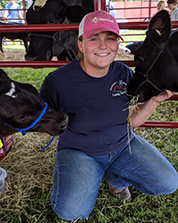
Every year around the end of March or the beginning of April, the fields that have lay dormant suddenly come to life with yellow mustard/turnips. When I was a kid, granddad would have us go out into the field and pick as many turnips as we could. He hated those weeds with a passion. It wasn’t until I was a little older that I realized picking turnips was completely pointless because for every one you picked, three more took its place. Once I realized this, I’d go out and pick two or three and leave them on granddad’s truck for him to find.
To us, they are invasive weeds that take away prime resources needed for small grain and alfalfa. We spend time and money trying to keep them at bay and, hopefully, eradicate them permanently from our fields. However, over the last couple of years, we’ve caught folks stopping and taking pictures. My Facebook Messenger has blown up with people asking if the yellow flower field belongs to us and if they can take pictures there. The simple field of weeds that we usually roll our eyes and silently curse at has suddenly become a prime photo shoot location. Who would’ve thought that the weeds would be a hit to photographers and everyone around the area.
The nuisance has become a beauty to all, but it has become a hassle for us at times. We’ve had many folks just stop on the side of the road and take pictures without permission. We’ve had folks drive into the field and others trample too much of it down and limit the crop that is trying to grow underneath. We’ve had to have insurance contracts written up between us and other photographers in order to release us from any liability in the case of an accident during photo shoots. We’ve also had to make people leave due to trespassing without permission, litter, and more.
When all of this is taken into consideration, I kind of just stand back and smile. The pictures these photographers snap in my “yellow flower” field are incredible and breathtaking. I’m not a photographer, and in my eyes, it looks like a field of turnips, but to them it’s a masterpiece. It’s surprising sometimes how we get caught up in things and forget to appreciate the beauty of simple things, like yellow mustard/turnips.

The author is a sixth-generation farmer and fifth-generation dairy producer in southwest Virginia, where she and her family own and operate a 145-head Holstein dairy. Courtney is involved in agriculture organizations throughout her community and is a graduate of Virginia Tech.








